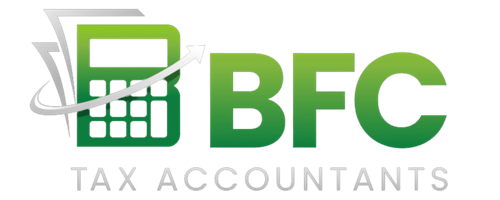Discover the impact of ecommerce bookkeeping services on your business growth, streamline finances, boost efficiency, and make informed decisions.
Continue readingPersonal Tax Filing Deadline: Don’t Miss It
Understand the personal tax filing deadline and get tips on managing your taxes efficiently to avoid penalties and make the most of your return.
Continue readingPersonalized Bookkeeping & Tax Services Explained
Streamline your finances with personalized bookkeeping & tax services. Learn practical tips to optimize your business’s financial management.
Continue readingSmall Business Bookkeeping and Accounting Services
Explore bookkeeping and accounting services for small business to streamline finances and boost efficiency effortlessly in your daily operations.
Continue readingUnderstanding the Cost of Bookkeeping Services
Explore how much bookkeeping services cost, learn key factors affecting pricing, and get insights to choose the right service for your business needs.
Continue readingUnderstanding Management Fees
Understanding Management Fees in Canadian Business Context
Management fees provide Canadian business owners with a strategic yet straightforward way to extract value from their corporations while optimizing tax strategies. At its heart, a management fee is compensation granted by a corporation to its owner, director, or a related entity for legitimate management and administrative services rendered to the business. Unlike traditional salary or dividends, management fees present distinct tax planning opportunities, though they demand careful attention to compliance and documentation.
The Fundamental Structure of Management Fees
When integrating a management fee strategy, the business owner sets up a clear service relationship with their corporation. This relationship should be formalized through a written management agreement that details specific services like strategic planning, operational oversight, financial management, and business development.
CRA Requirements:
The Canada Revenue Agency (CRA) requires these agreements to mirror those made between unrelated parties, ensuring fees are aligned with market rates for similar services.
Tax Advantages and Strategic Planning Opportunities
Tax and strategic advantages to corporations
The main tax benefit of management fees lies in their deductibility at the corporate level, unlike dividends paid from after-tax profits. Management fees are viewed as a business expense, reducing corporate taxable income, and realizing immediate tax savings, especially in provinces with elevated corporate tax rates. It also reduces the administrative work and cost pose by payroll processing and tax remittances.
Tax and strategic advantages to the business owner
The business owner can decide to take all management fees in the same year or apportion it and take part in the current year and the remaining in the year following the tax year. The business owner can also deduct the business portion of home office and automobile expenses used for business purposes.
Consider below case study:
For instance, a corporation in Ontario with a 12.2% (for CCPCs) corporate tax rate paying $200,000 in management fees secures a corporate tax saving of $24,000, provided the fees comply with the reasonableness test.
Timing Flexibility and Income Management
A significant feature of management fees is their flexible timing. Under Canadian tax law, corporations can accrue fees in one year but pay them in the next year, provided payment is within 180 days of year-end. This offers notable tax planning opportunities.
Example case study:
For example, a business owner might accrue $200,000 in management fees at the end of 2024, receiving $120,000 in 2024 and $80,000 in 2025, effectively stretching income over two years while still securing the 2024 corporate deduction.
Comparative Analysis with Other Compensation Methods
Management fees and Salary:
Compared to salaries, which require regular payroll deductions for income tax, CPP and EI, increasing administrative work and cost, management fees offer more flexibility in timing and structure. They also generate pensionable earnings for CPP if paid to individuals. However, management fees paid to a management company do not create RRSP contribution room or CPP contribution, as in the case of individuals.
Management fees and Dividends:
Dividends have different tax implications. Although eligible and non-eligible dividends benefit from a dividend tax credit, reducing the effective tax rate for recipients, they don’t provide a deduction for the corporation. Conversely, management fees offer immediate corporate tax savings while being taxed as regular income for the recipient, a potential advantage when corporate tax rates surpass personal rates. The individual receiving the fees may also deduct the business portion of home office and automobile expenses.
Practical Implementation and Documentation Requirements
To effectively implement a management fee strategy, meticulous documentation and compliance are essential. The CRA closely examines these arrangements, especially in owner-managed businesses. Essential documentation includes:
-
Detailed management services agreements, specifying services, duties, and fee calculations, reviewed and updated annually.
-
Regular invoices outlining services, hours worked, and rates to affirm the legitimacy of the arrangement.
-
Board resolutions or minutes endorsing the fee structure, supporting corporate governance and decision-making.
Real-World Application and Best Practices
Consider a small business owner in Ontario with $400,000 in annual profits. Instead of only taking a salary or dividends, they implement a balanced strategy, including management fees, reflecting 30 weekly hours of strategic and operational tasks. The owner set a $100,000 annual fee supported by detailed monthly invoices. The company also paid $70,000 in dividends to the business and $30,000 salary.
Overall Savings Potential
The above approach can potentially provide up to $15,860 in corporate tax savings, $7,269 in dividend tax credit and in addition, the business owner/manager can deduct the business portion of the home office and automobile expenses. This setup aids corporate tax deduction while allowing personal tax management through timing and planning, reinforced by a strong agreement and comprehensive logs.
GST/HST Considerations and Compliance
A frequently overlooked element is GST/HST treatment. Management services typically qualify as taxable supplies, necessitating GST/HST registration and collection if fees exceed $30,000 over four quarters. While this increases administrative duties, it permits corporations to claim input tax credits on GST/HST paid on fees.
Risk Management and Future Planning
To preserve the strategy’s effectiveness and minimize CRA challenges, regular reviews and modifications are crucial. Annual assessments should address:
-
The reasonableness of fees against business needs.
-
Changes in tax laws and CRA positions impacting the strategy.
-
Integration of management fees with other compensation methods to optimize total tax positions.
Professional Support and Ongoing Maintenance
Given the complexities of tax laws, enlisting expert tax professionals for setup and ongoing management of your strategy is vital. Our team ensures your arrangements meet technical requirements and provide detailed guidance on documentation, boosting tax efficiency and preparing for possible CRA queries.
Partnership Opportunities:
Let us partner with you, providing expert guidance and support to navigate these tax strategies effectively. Contact BFC Tax Accountants today to explore our comprehensive service offerings designed to optimize your business’s tax position while ensuring full compliance with regulations.
Exacta Bookkeeping Tax Services: What We Offer
Explore Exacta Bookkeeping Tax Services. Learn how our expert solutions simplify tax prep, optimize finances, and support your business growth.
Continue readingBookkeeping Services Price List: What to Look For
Explore what to look for in a bookkeeping services price list PDF and choose the right service for your needs. Expert tips on prices and features included.
Continue readingDividend Tax Planning Strategies for Canadian Business Owners
Are you a business owner watching your hard-earned profits diminish due to taxes? You’re not alone. Many successful entrepreneurs face this challenge, but a solution is on the horizon: strategic dividend optimization that can transform your financial future.
In this comprehensive guide, we’ll explore how Canadian business owners leverage sophisticated dividend strategies to build lasting wealth while staying within the bounds of the tax system. From real-world success stories to practical implementation strategies, let’s delve into the realm of tax-efficient business ownership.
The Foundation: Understanding Canadian Dividend Taxation
Before delving into advanced strategies, it’s vital to establish a clear understanding of dividend processes in Canada.
When your corporation distributes profits to shareholders, these distributions are categorized as either “eligible” or “non-eligible” dividends. The distinction? Eligible dividends derive from income taxed at the general corporate rate, whereas non-eligible dividends originate from income taxed at the small business rate.
The Canadian tax system employs a unique integration method intended to prevent double taxation of corporate income, encompassing the following:
-
A dividend gross-up mechanism (38% for eligible dividends, 15% for non-eligible dividends in 2024)
-
Federal and provincial dividend tax credits
-
Integration adjustments based on your province of residence
Strategy #1: Optimizing with the Dividend Tax Credit
Meet Sarah Chen, owner of Innovative Tech Solutions Ltd. Her story exemplifies the power of strategic dividend planning.
Sarah previously earned a $180,000 annual salary, placing her in a high tax bracket. After consulting her tax advisor, she restructured her compensation to include:
-
A $60,000 base salary (preserving RRSP contribution space)
-
$120,000 in eligible dividends
The outcome? Annual tax savings of $12,000 through the enhanced dividend tax credit. But Sarah didn’t stop there. By involving her spouse, Michael, who actively participated in the business, they achieved additional family tax savings of $8,000.
Key Takeaway: The right combination of salary and dividends can significantly reduce your tax burden while maintaining key benefits like RRSP contribution room and CPP coverage.
Strategy #2: Income Splitting Done Right
The Martinez family business illustrates the remarkable potential of proper income splitting. Their manufacturing company, generating $500,000 in annual profit, underwent a strategic transformation offering valuable lessons on family business taxation.
John Martinez, initially the sole shareholder paying 53.5% marginal tax, restructured his business to include:
-
Multiple share classes for different family members
-
Active family member participation meeting TOSI requirements
-
Strategic distribution of $400,000 among family members
This restructuring yielded annual tax savings of $45,000 while establishing a clear succession path for the next generation.
Pro Tip: When implementing income splitting, ensure family members either:
-
Work at least 20 hours per week in the business
-
Own at least 10% of votes and value in non-service businesses
-
Meet other specific TOSI exemptions
Strategy #3: The Art of Timing
Dr. Sarah Wong’s dental practice offers a masterclass in the strategic timing of dividends and salary. During her planned six-month sabbatical, she implemented a two-phase strategy:
Working Period (January-June):
-
Drew a $120,000 salary
-
Maintained RRSP contribution room
-
Continued CPP contributions
Sabbatical Period (July-December):
-
Distributed $180,000 in dividends
-
Benefited from lower marginal tax rates
-
Maximized dividend tax credit benefits
The result? $27,000 in tax savings compared to her previous compensation strategy.
Advanced Techniques for Sophisticated Business Owners
The Power of Holding Companies
The Chen family business case demonstrates how a holding company structure can revolutionize your tax planning:
James Chen’s technology consulting firm implemented a holding company framework that:
-
Protected $1.5 million in assets over three years
-
Reduced family tax burden by $45,000 annually
-
Established a clear succession path
-
Maintained QSBC status for future capital gains exemption
Insurance Strategies for Tax-Free Wealth Transfer
Dr. Raj Kumar’s medical practice showcases innovative use of corporate-owned life insurance:
-
$4 million permanent life insurance policy
-
Created a $3.25 million credit to the Capital Dividend Account
-
Enabled tax-free wealth transfer to the next generation
-
Resolved estate equalization challenges among children
Implementing Your Own Dividend Optimization Strategy
Success in dividend optimization requires careful planning and expert guidance. Consider these steps:
-
Assess Your Current Structure
-
Review your compensation mix
-
Evaluate family member involvement
-
Analyze corporate structure
-
-
Identify Opportunities
-
Tax bracket optimization
-
Income splitting potential
-
Timing advantages
-
-
Create Your Strategy
-
Design an optimal share structure
-
Plan distribution timing
-
Consider succession implications
-
-
Monitor and Adjust
-
Conduct regular tax planning reviews
-
Adapt to changing circumstances
-
Continuously optimize
-
Looking Ahead: Building Your Tax-Efficient Future
The difference between good and exceptional business performance often lies in strategic tax planning. As these case studies illustrate, implementing sophisticated dividend strategies isn’t just about saving taxes—it’s about creating a foundation for lasting wealth that spans generations.
Ready to Transform Your Tax Strategy?
Taking the first step toward tax optimization is crucial. Consider:
-
How much tax could you save with sound dividend planning?
-
What opportunities for income splitting exist in your business?
-
How could strategic timing benefit your specific situation?
Get Expert Guidance
Our team at BFC Tax Accountants specializes in assisting business owners with the effective implementation of these strategies. Until February 28, 2025, we’re offering a complimentary Business Tax and Accounting Review (valued at $1,499) to help you identify the best opportunities for tax optimization.
Contact us to secure your review:
-
Phone: 778-744-9951
-
Email: [email protected]
-
Website: www.bfc.tax/contact
Note: This article provides general information only and should not be considered tax advice. Please consult with a qualified tax professional for guidance specific to your situation.
Hourly Rate for Bookkeeping Services: A Guide
Discover hourly rate for bookkeeping services, understand factors affecting costs, and get insights into pricing strategies for your business success.
Continue reading











